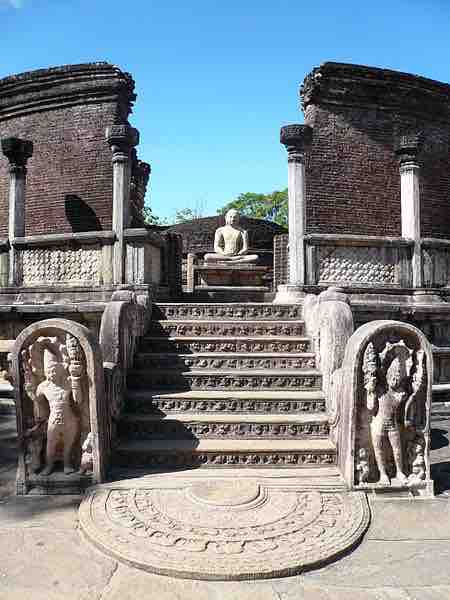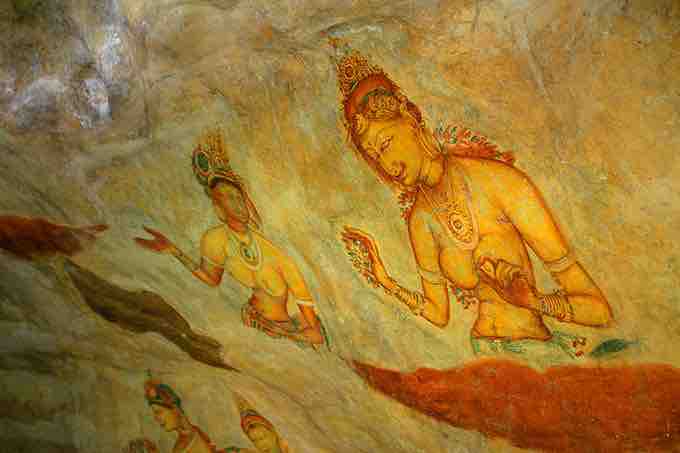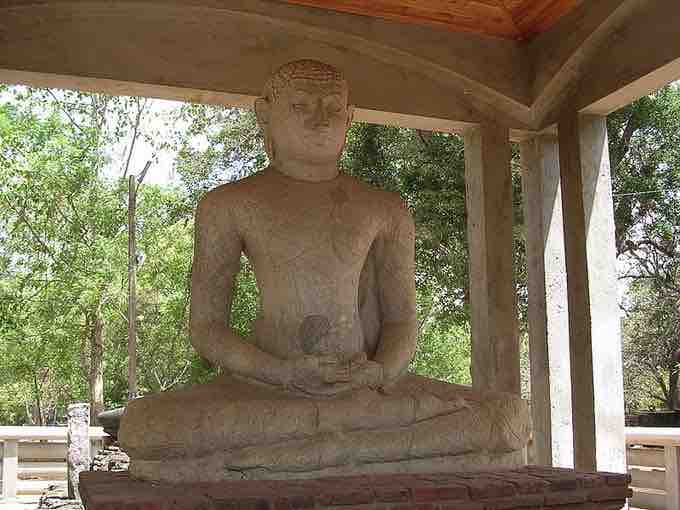Overview: Buddhist Architecture
Buddhist religious architecture developed in the Indian Subcontinent in the 3rd century BCE. Three types of structures are typically associated with the religious architecture of early Buddhism: monasteries (viharas), places to venerate relics (stupas), and shrines or prayer halls (chaityas or chaitya grihas), which later came to be called temples in some places. Viharas were initially only temporary shelters used by wandering monks during the rainy season, but they later developed to accommodate the growing and increasingly formalized Buddhist monasticism. A distinctive type of fortress architecture found in the former and present Buddhist kingdoms of the Himalayas is known as dzongs.
The initial function of the stupa was the veneration and safe-guarding of the relics of the Buddha. The earliest surviving example of a stupa is in Sanchi (Madhya Pradesh). In accordance with changes in religious practice, stupas were gradually incorporated into chaitya-grihas. These reached their high point in the 1st century BCE, exemplified by the cave complexes of Ajanta and Ellora (Maharashtra). The Mahabodhi Temple at Bodh Gaya in Bihar is another well-known example.
Buddhist Architecture in Sri Lanka
Sri Lankan art and architecture was deeply influenced by Buddhism, which was introduced to the island in the third century BCE by the son of Ashoka, Mahinda. Ashoka, the great Buddhist emperor of the Maurya Dynasty, dedicated himself to the propagation of the religion across Asia. Sri Lanka has the longest continuous history of Buddhism of any Buddhist nation, and its culture reflects its religious tradition.
Cave Temples
The earliest examples of Buddhist architecture found in Sri Lanka are cave temples. The most famous of these, the Dambulla temple complex, dates back to the 1st century BCE. This complex consists of five caves and is decorated inside with statues and frescoes of the Buddha and various gods and goddesses from the Buddhist pantheon.
Sri Lankan Stupas
The kingdom of Anuradhapura (377 BCE - 1017 CE), named for its capital city, produced some of the finest ancient Sri Lankan art and architecture. Some of the most distinctive and famous Sri Lankan monuments were built during this period, including a large number of dagobas or stupas, for which the island is renowned. Sri Lankan stupas were among the largest brick structures known to the premodern world. Intended to enshrine relics of the Buddha, they were built in various shapes, including the bubble, the pot, and the bell. The Sri Lankan stupa is characterized by its vahalkada, or frontispiece: a structure, often ornately carved, joining the stupa and often using cardinal directions as a decorative flourish. One of the most famous stupas in Sri Lanka is the Jetavanaramaya stupa, which was built during the 3rd and 4th centuries CE in the sacred city of Anuradhapura and is believed to house a part of a sash of the Buddha. Built from baked bricks bound with limestone, sand, and clay and coated with lime plaster, this stupa stands at 400 feet and was the tallest stupa in the ancient world.
The Vatadage
Another architectural creation associated with stupas and unique to ancient Sri Lankan architecture was the Vatadage, a circular Buddhist structure built around small stupas. These were usually made of stone and brick and elaborately carved. They may have also had wooden roofs that were supported by stone columns arranged in concentric rows.

Polonnaruwa Vatadage
Vatadage in the ancient city of Polonnaruwa, Sri Lanka, 12th century CE
Sigiriya
Another famous monument erected under the patronage of Anuradhapura was the rock fortress and palace complex of Sigiriya. Sigirya is particularly renowned for its ancient frescoes, which date from the 5th century and were painted in a very distinctive style. The lines are painted in a manner that enhances the sense of volume of the figures, and the paint is applied in sweeping strokes, using more pressure on one side than the other and giving the effect of a deeper tone toward the edges. The frescoes all depict beautiful female figures who are carrying flowers and are hypothesized to be apsaras (celestial nymphs), ladies of the king's court, or women taking part in religious rituals.

Sigiriya Fresco
Depicting women with flowers, the Sigiriya frescoes are examples of a distinctive Sri Lankan school of painting from the 5th century CE.
Buddhist Sculpture
Sculpture was also a notable art form, and many fine statues of the Buddha were produced during the Anuradhapura period in Sri Lanka. The Samadhi statue in Anuradhapura is considered one of the finest examples of ancient Sri Lankan sculpture. Sculpted from dolomite marble, it dates to the 4th century CE and shows the Buddha seated in a position of deep meditation.

Samadhi Statue
Located in Anuradhapura, this statue dates to the 4th century CE and is a fine example of ancient Sri Lankan Buddhist sculpture.